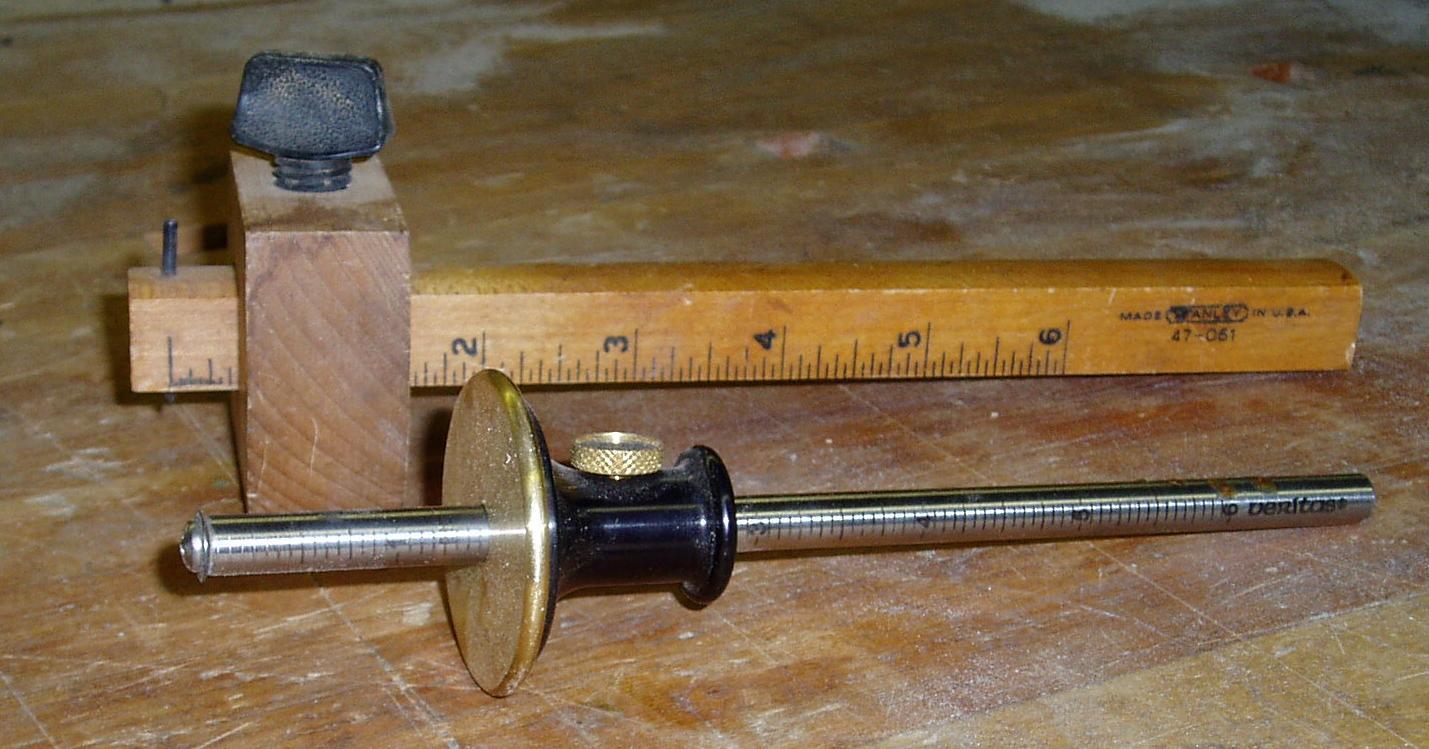|
Mortise Gauge
A mortise gauge or mortice gauge is a woodworking tool used by a carpenter or joiner to scribe mortise and tenon joints on wood prior to cutting. Mortise gauges are commonly made of hardwood with brass fittings. Like the simpler marking gauge A marking gauge, also known as a scratch gauge, is used in woodworking and metalworking to mark out lines for cutting or other operations. The purpose of the gauge is to scribe a line parallel to a reference edge or surface. It is used in joiner ..., a mortise gauge has a locking thumb screw slide for adjusting the distance of the scribe from the edge of the wood. It has two protruding pins, often called "spurs",The Mortise Gauge ''Technology Student'' which are designed to scribe parallel lines marking both sides of a [...More Info...] [...Related Items...] OR: [Wikipedia] [Google] [Baidu] |
Hardwood
Hardwood is wood from dicot trees. These are usually found in broad-leaved temperate and tropical forests. In temperate and boreal latitudes they are mostly deciduous, but in tropics and subtropics mostly evergreen. Hardwood (which comes from angiosperm trees) contrasts with softwood (which is from gymnosperm trees). Characteristics Hardwoods are produced by angiosperm trees that reproduce by flowers, and have broad leaves. Many species are deciduous. Those of temperate regions lose their leaves every autumn as temperatures fall and are dormant in the winter, but those of tropical regions may shed their leaves in response to seasonal or sporadic periods of drought. Hardwood from deciduous species, such as oak, normally shows annual growth rings, but these may be absent in some tropical hardwoods. Hardwoods have a more complex structure than softwoods and are often much slower growing as a result. The dominant feature separating "hardwoods" from softwoods is the presence o ... [...More Info...] [...Related Items...] OR: [Wikipedia] [Google] [Baidu] |
Marking Gauge
A marking gauge, also known as a scratch gauge, is used in woodworking and metalworking to mark out lines for cutting or other operations. The purpose of the gauge is to scribe a line parallel to a reference edge or surface. It is used in joinery and sheetmetal operations. The gauge consists of a beam, a headstock, and a scribing or marking implement, typically a pin, knife, pen or wheel. The headstock slides along the beam, and is locked in place by various means: a locking screw, cam lever, or a wedge. The marking implement is fixed to one end of the beam. Types The marking implement is chosen depending upon the operation to be performed. Some marking gauges have the capability to allow a number of implements to be fitted, others do not; and a woodworker will often have a number of different types. A steel pin is used when scribing with the grain. A steel knife is used when scribing across the grain. The pen or pencil is used when the woodworker does not wish the surface to b ... [...More Info...] [...Related Items...] OR: [Wikipedia] [Google] [Baidu] |
Mortise And Tenon
A mortise and tenon (occasionally mortice and tenon) joint connects two pieces of wood or other material. Woodworkers around the world have used it for thousands of years to join pieces of wood, mainly when the adjoining pieces connect at right angles. Mortise and tenon joints are strong and stable joints that can be used in many projects. They furnish a strong outcome and connect by either gluing or locking into place. The mortise and tenon joint also gives an attractive look. One drawback to this joint is the difficulty in making it because of the precise measuring and tight cutting required. In its most basic form, a mortise and tenon joint is both simple and strong. There are many variations of this type of joint, and the basic mortise and tenon has two components: #the mortise hole, and #the tenon tongue. The tenon, formed on the end of a member generally referred to as a rail, fits into a square or rectangular hole cut into the other, corresponding member. The tenon is cu ... [...More Info...] [...Related Items...] OR: [Wikipedia] [Google] [Baidu] |

